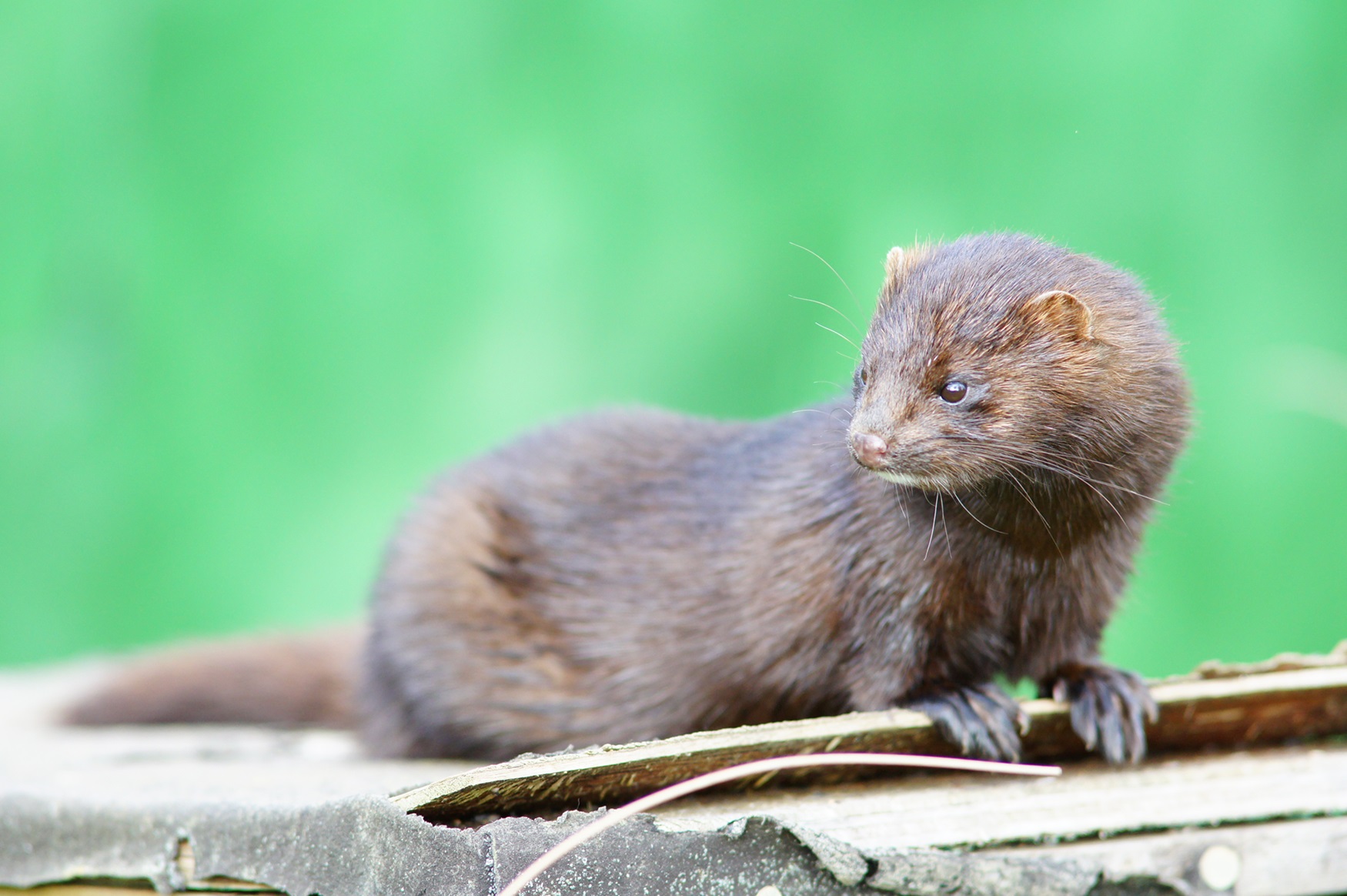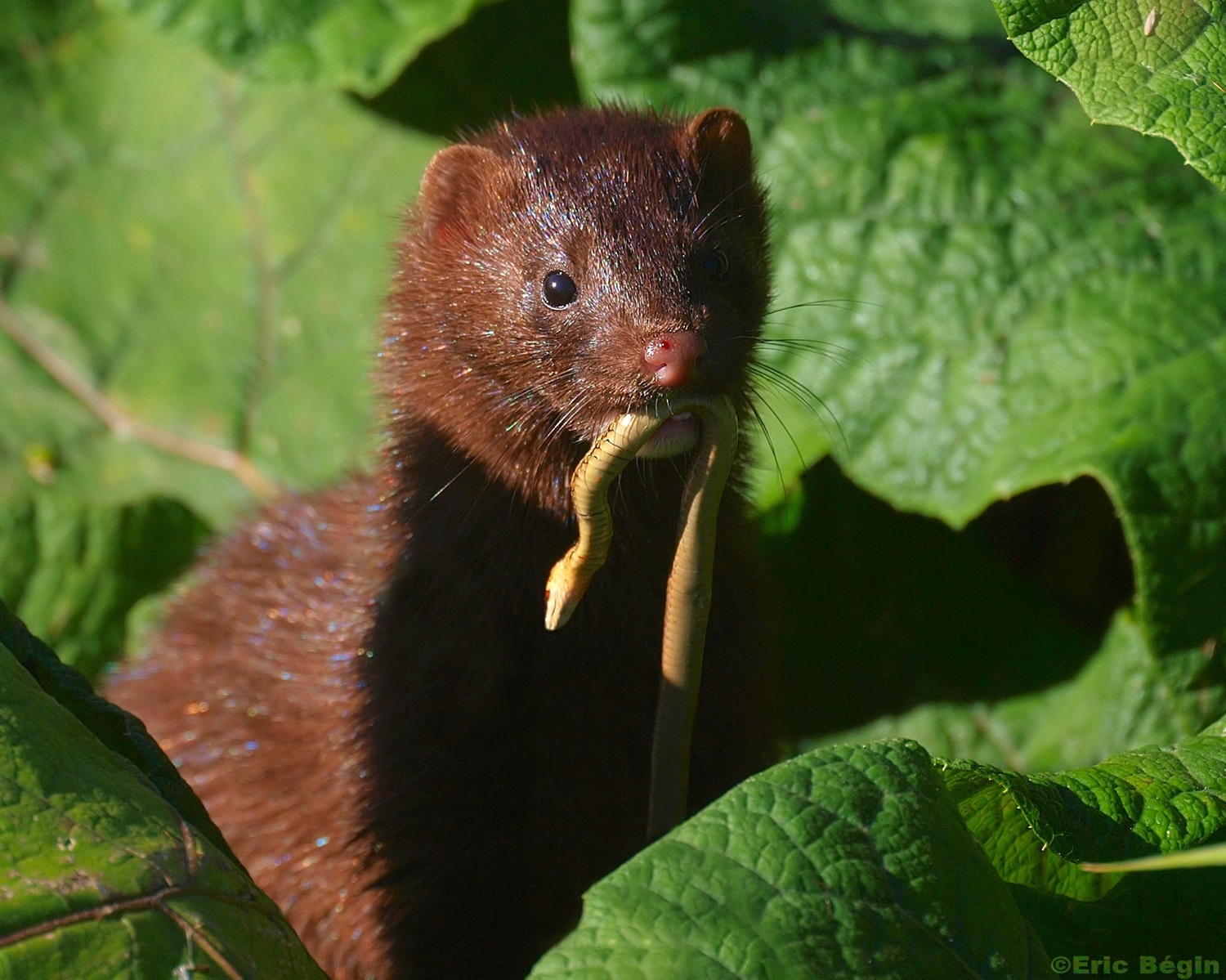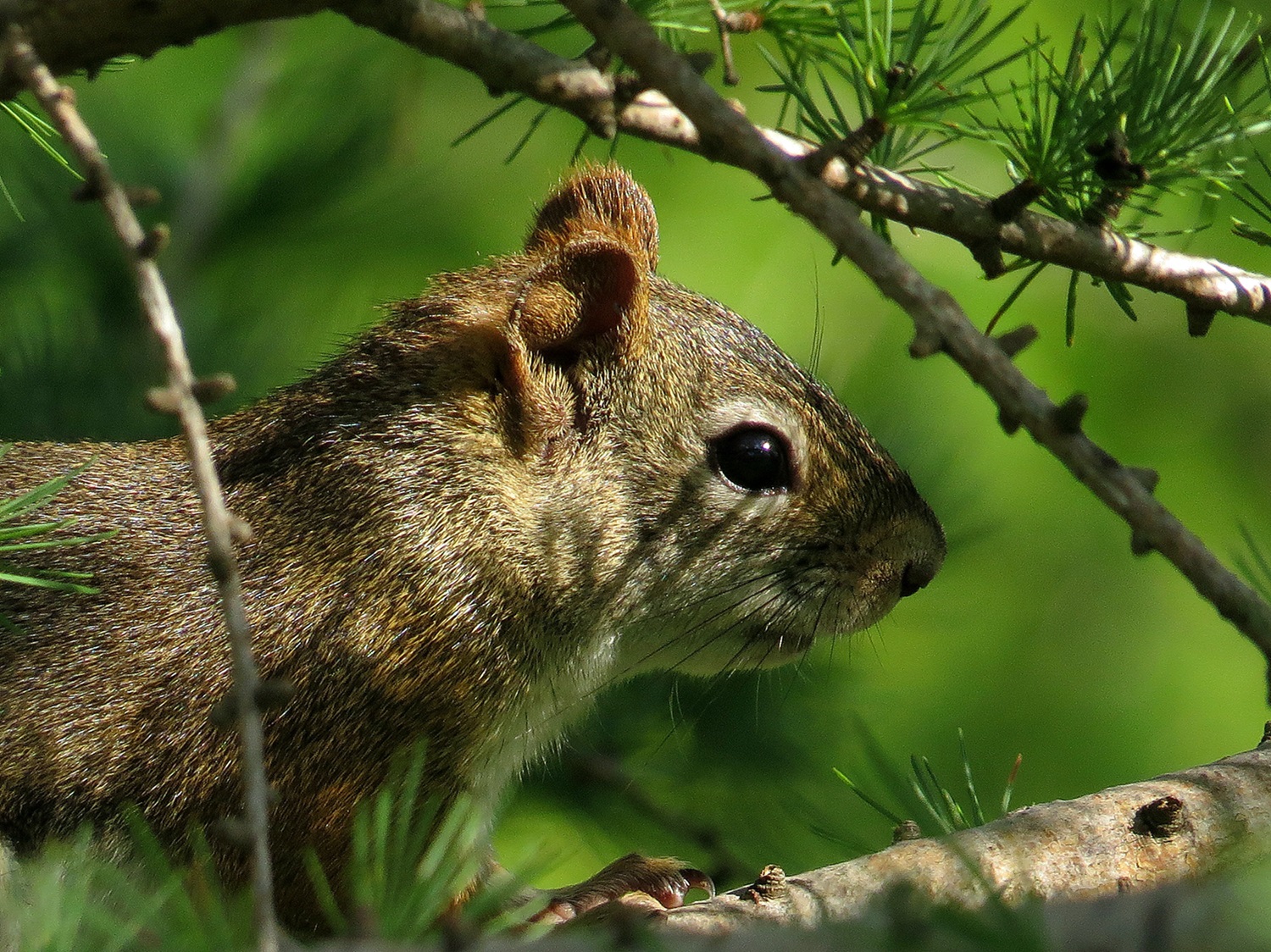The American mink (Neogale vison) is a small, amphibious weasel inhabiting wetlands throughout Canada, excluding the tundra, and is abundant along the British Columbia coastline. Part of the genus Neogale, the American ink is closely related to the long-tailed weasel (Neogale frenata) and now extinct sea mink (Neogale macrodon), among others.

Description
Mink are brown with some white on the chest and abdomen. Although the feet are not webbed, mink swim and dive well. The fur is dense and lustrous and serves as insulation even in water. Males reach 1.8 kg in weight and 60 cm in length; females weigh less than 1 kg. Mink feed on a variety of fish, invertebrates (especially sea crabs), small mammals and amphibians.

Reproduction and Development
Except along the Pacific coast, they breed between February and March and give birth in late April and May. On the coast, they breed in May–June and give birth in July. The litter size is usually 5 (range 1–10), and young reach adult weight in 4 to 10 months (females and males, respectively).

Fur Trapping and Fur Farming
The mink is one of the most valuable Canadian fur-bearers. In 1993–1994, almost 34,000 mink were trapped, and over 788,000 were produced on fur farms (see Fur Farming; Fur Trapping).
Did you know?
The now-extinct sea mink (Neogale macrodon) is the only other modern species of mink. This species was native to Canada, calling much of the maritime provinces and northeastern United States home, mostly around the Gulf of Maine. It went extinct in the late 19th century as a result of overhunting.


 Share on Facebook
Share on Facebook Share on X
Share on X Share by Email
Share by Email Share on Google Classroom
Share on Google Classroom




